Human Torch Comics #4 (1941)
cover by Alex Schomburg
We’ll have a look at the Human Torch story later. Notice that the cover incorrectly numbers this as issue #3, but that’s not correct.
They probably confused because the first number was actually Human Torch Comics #2, which directly followed Red Raven Comics #1.
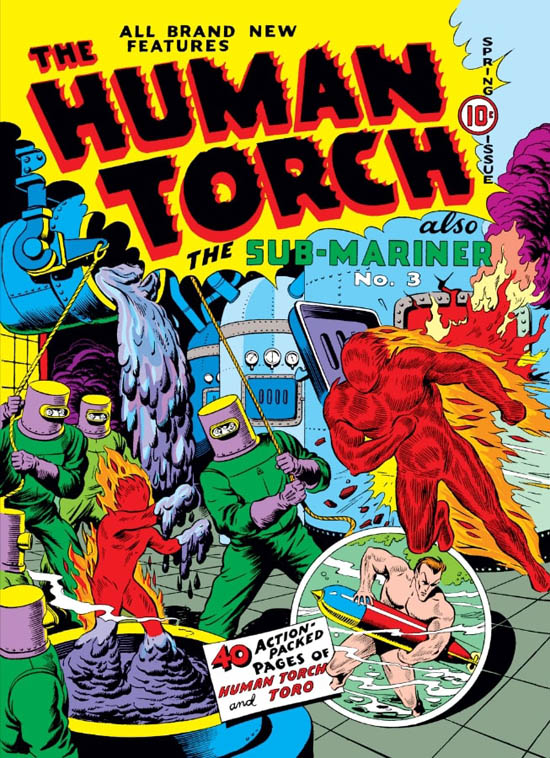
But we will first concentrate on The Patriot.
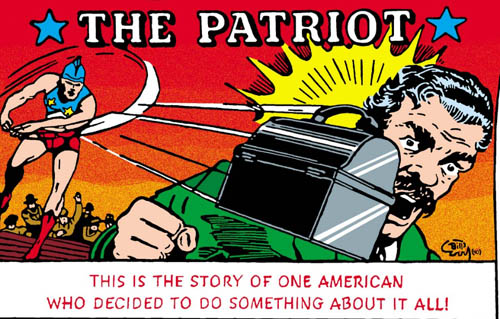
Who is also a complicated case, because it’s a prose story!
It’s written by Ray Gill, a Golden Age writer active throughout the 40s and 50s.
Interestingly the story is “as told TO Ray Gill”, not BY Ray Gill.

But since I can’t just review that story without simply showing its full two pages, let’s move on to the proper story that follows.
“The Serum Must Get Through!”
by Ray Gill & George Mandel

This was published in March 1941, so America hasn’t joined the war yet, but you can tell it’s in the air.

We are firmly in fifth column territory, but uniquely it’s not from Germany.
It’s from the “Yellow Shirts” organization and their bald leader.



The story really, really, REALLY wants you to remember that The Patriot’s secret identity is a newspaper. We’re at page three and it’s already been repeated three times before he’s even had the chance to speak!
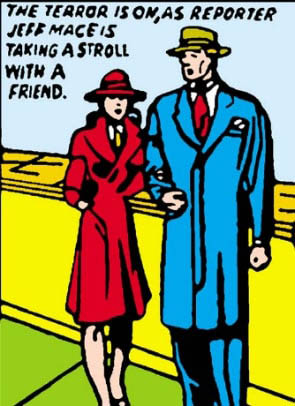
And then a skyscraper explodes!!!
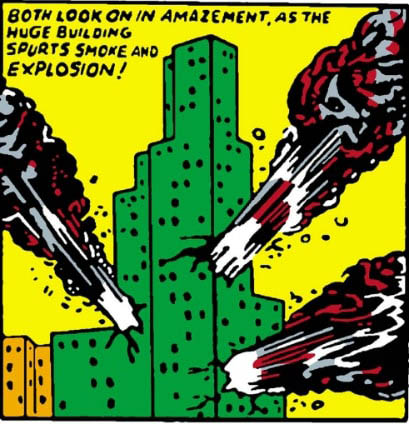
Well at least it’s SUPPOSED to be a skyscraper.

Yeah the artwork’s not really doing this any favors. It’s supposed to be a near-apocalyptic scenario.
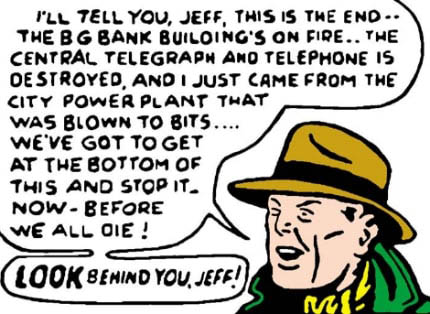

Up to this point, it’s shocking how few superheroes actually follow Superman’s example by having the secret identity pretending to be a wimp.
The Patriot (who is really newspaperman Jeff Mace) is one who does.

This looks like a job for The Patriot (who is really newspaperman Jeff Mace).


While The Patriot (who is really newspaperman Jeff Mace) handles the Yellow Shirts on the streets, they’re also trying to take control of Consolidated News.
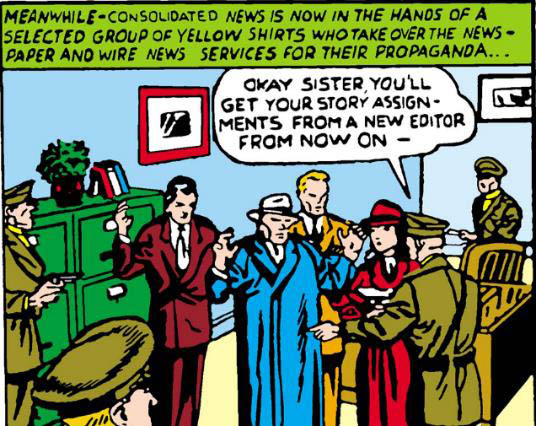
With 1941 technology you’d think this would only have a very localized effect, if any, but it already goes national.
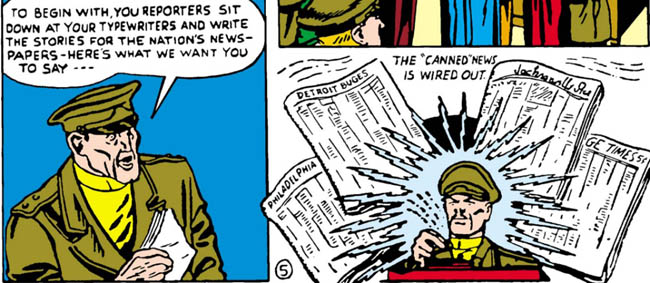
But they’re also stopped by The Patriot (who is really newspaperman Jeff Mace).
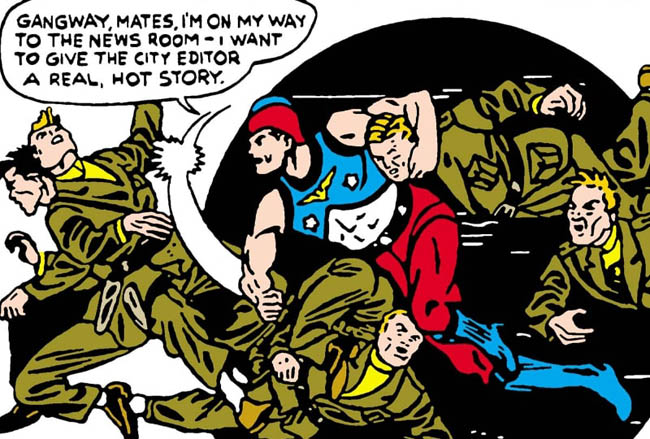
Seriously, am I the one underestimating 1941 newspapers?
Even if all of them received the information they couldn’t possibly have had the time to publish ANYTHING, right?

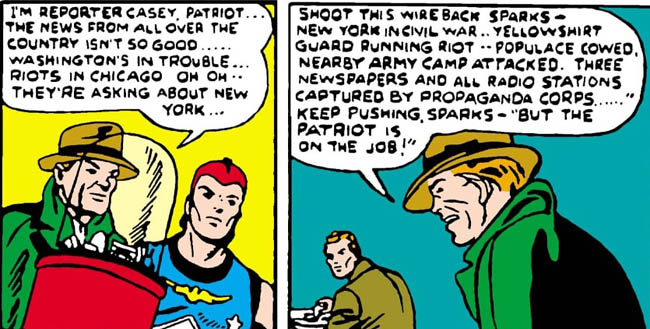
You can tell that this is still when very few considered the fact that multiple superheroes were already based in New York City. The Human Torch lives there, you’d think he’d show up for this!

It should also be noted that The Patriot (who is really newspaperman Jeff Mace) is handling all this chaos by himself, even though he doesn’t even have any powers!

And it’s not like he works for the Army, even though they let him do all the work.
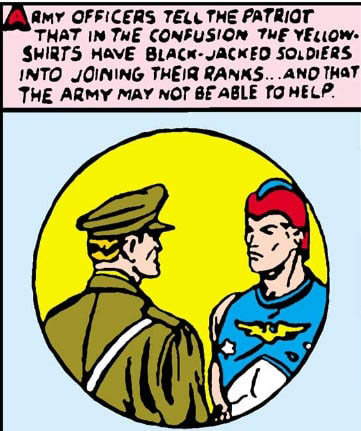
I guess he’s SO charismatic that he’s able to inspire the whole city to resist the Yellow Shirts.
(incidentally, that is one very yellow building)
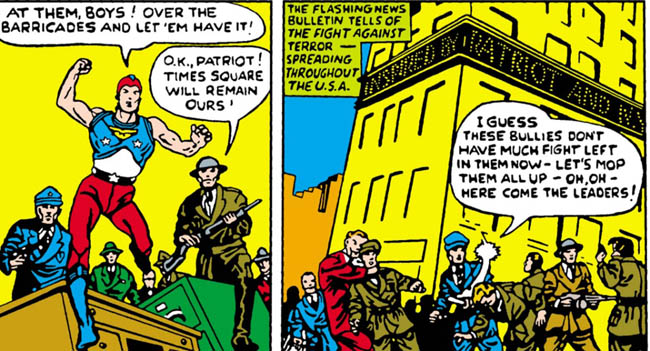
And so The Patriot (who is really newspaperman Jeff Mace) beats up Not Mussolini.

All followed up by an inspirational speech by The Patriot (who is really newspaperman Jeff Mace).
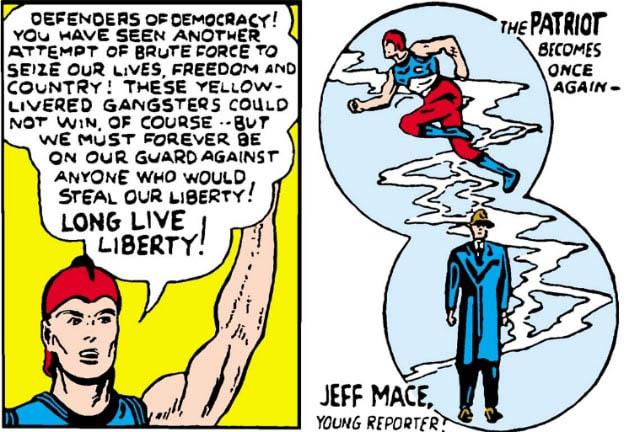
At this point he should be the most recognizable man in the city, right? He’s not even wearing glasses!!!

Historical significance: 6/10
Incredibly, Patriot ends up being important for a lot of retcons.
Silver Age-ness: 6/10
So this almost army shows up to blow up multiple buildings and take over the news… and the US authorities do absolutely nothing, leaving everything to a random guy?
Does it stand the test of time? 0/10
That was bad. Like really, REALLY bad, even by the lowest possible Golden Age standards.
It completely lacks any of the charm that sometimes redeems those very simplistic early stories!
From the story to the artwork, this looks like a child did everything.
How close is this to the modern character? What modern character?
Patriot is moderately popular in the Golden Age. He doesn’t get the spotlight like Cap, the Torch or Namor, but he’s immediately below them with around 50 stories, up until 1946.
Along with MANY Golden Age characters we’ve seen before, a simulacrum shows up in 1972’s Avengers #97 by, who else, Roy Thomas.

And speaking of Roy Thomas, in 1976 he uses Patriot both on the pages of Invaders and on Marvel Premiere. In the latter, Patriot is as one of the members of the Liberty Legion: another superhero team that operates in the Golden Age despite being a 70s invention.
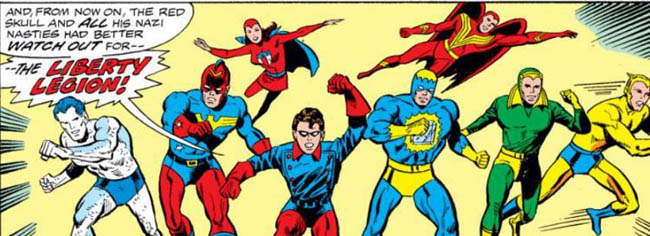
He’s also redesigned with a FAR better costume.

So he SHOULD have remained as obscure as people like Thin Man, if it wasn’t to help establishing a retcon.
As previously mentioned, Captain America didn’t stop having adventures in 1945: there were other stories published, and set, AFTER the end of the war.
So when Captain America was unfrozen in 1964 and explicitly said to have disappeared in 1945, only two things were possible: either those stories had to be erased from continuity, or someone ELSE was being Captain America.
Marvel went with the latter, and officially all Captain America stories published between 1946 and 1950 are really featuring Patriot.
Specifically, the switch retroactively starts with Captain America Comics #59.
(Please note this is NOT the same thing as the “Commie Smasher” Captain America from the 50s, that was retconned to being yet another guy)

This period has been explored a couple of times, most notably in 2010’s “Captain America: Patriot” miniseries.

He dies of cancer in 1983’s Captain America #285, during the DeMatteis run.

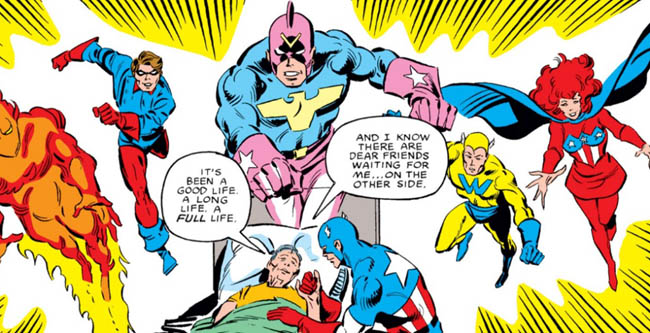
As of 2024 he’s still dead.
Either because there’s already too many patriotic heroes around, or because he wasn’t exactly a very complex character, or because his death was handled extremely well.

He has a weird adaptation: there is a Jeff Mace that becomes a patriotic hero in the Agents of S.H.I.E.L.D. TV series. While he’s a great character, the only thing he inherits is the name. This one even gains super-strength.
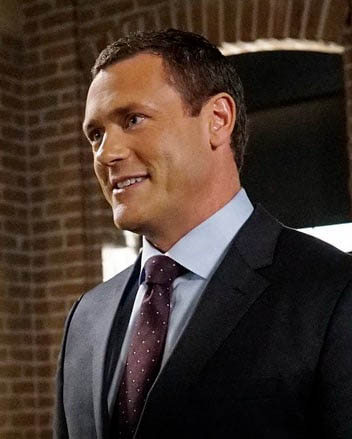
But Jeff Mace’s legacy extends further, because the are other Patriots.
By far the most famous is Eli Bradley, from the Young Avengers.
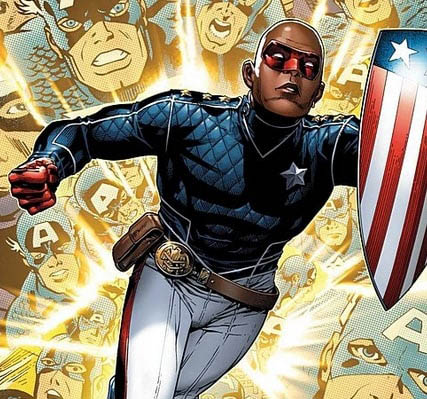
He’s not Patriot anymore, though. He’s been replaced in the role of Patriot by Shaun Lucas.
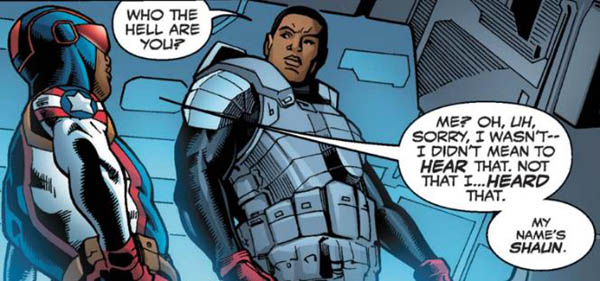
And he brings us back to the original inspiration: because while Eli only took the codename, Shaun’s costume pays homage to the original Patriot (who was really newspaperman Jeff Mace)

What else was in Human Torch Comics #4?
Unsurprisingly the Human Torch. With Toro of course, who gets the moniker “The Flaming Kid”. Why didn’t they keep that name, it’s great!
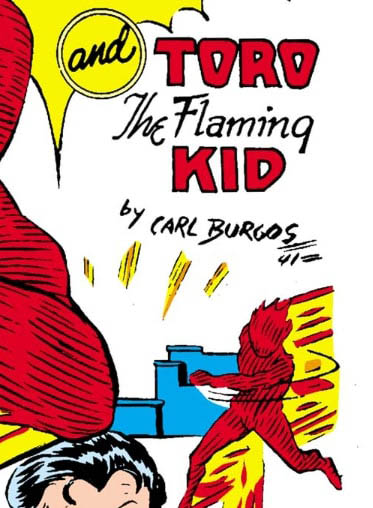
No wonder they get along, they have the same disdain for windows.
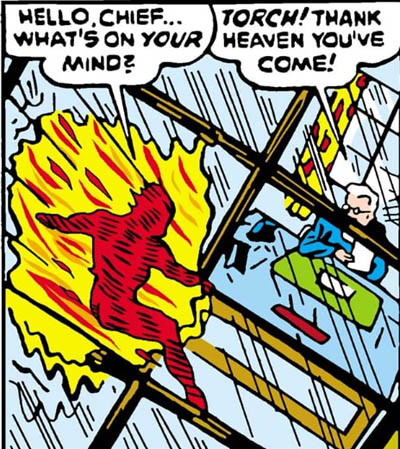

In these Golden Age stories, Burgos is awesome at drawing the Human Torch’s action scenes.
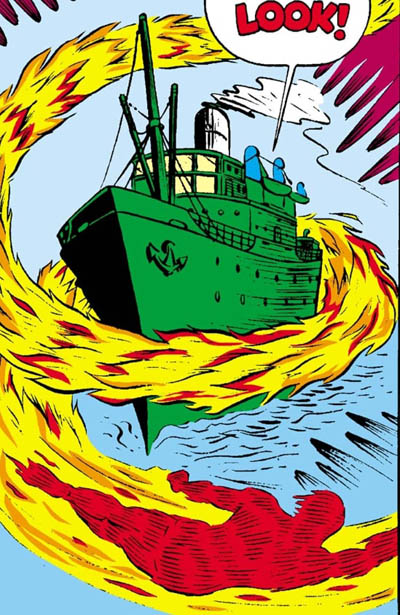


Regular people, especially children? Not so much.

Also I’m not convinced Toro isn’t near-invulnerable.

If you think the control that the Silver Age Human Torch has over his own flame is ridiculous… Johnny Storm’s got nothing on the original!


I often joke that Golden Age characters are contractually obligated to solve problems with their fists. You’d think the Human Torch would be different, but nope!

There’s also a Namor story.

Who for once is NOT at war with the surface dwellers! In fact, the US government asks for his help to deliver medicine to Alaska during a snowstorm.
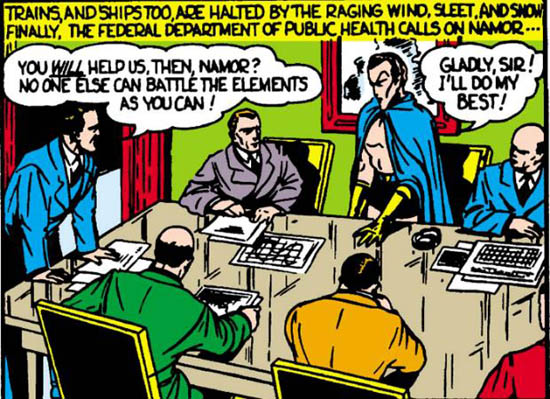
It’s a neat little adventure story with amazing artwork.
In my opinion, at this moment Namor has by far the best artwork of all Marvel series; even Jack Kirby on Captain America hasn’t yet risen enough to compete.
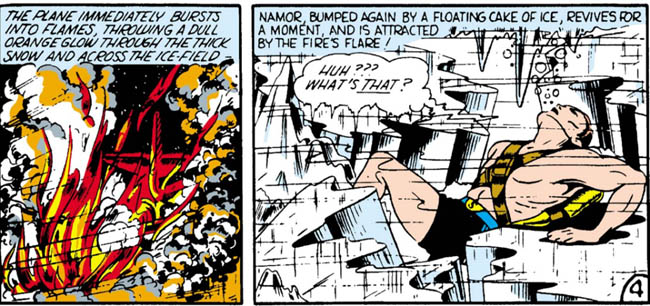

Definitely one of the more heroic exploits by Namor in this era.

